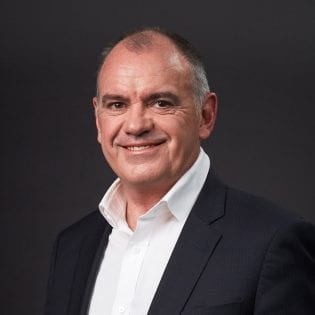Return to menu
Investing for strong, long term capital growth requires a strategy that invests in stocks that are fundamentally healthy, that can ride out short term volatility and deliver strong capital appreciation over the long-term. We do this by investing in the numbers – applying our quantitative methodology to construct a portfolio of liquid Stock Doctor Star Growth Stocks. These are among the most financially healthy, high quality growth stocks on the ASX that deliver strong long-term capital returns – a great outcome for investors and SMSFs.

By Tim Lincoln Managing Director and Chief Investment Officer
As of 25 October 2024
For over 12 months now, the Lincoln Australian Growth Fund has employed a tactical position to reduce portfolio volatility for our Australian Growth Fund. This defensive approach has unfortunately coincided with an extraordinary risk rally, which has seen equity markets globally push through all-time highs.
The basis for our defensive positioning was predicated on the Fund team’s assessment that earnings in 2024 were unlikely to experience any meaningful growth in the face of sticky inflation, tight monetary policy and sluggish economic growth. Even though all these conditions have endured throughout the year, the Australian equity market has ignored the weak earnings landscape and bid up shares to a point now where price-to-earnings multiples for the major Australian equity indices are at all-time highs.
We are observing a situation where valuations have almost never been more stretched and major geopolitical tensions are looking likely to escalate further. The Fund team therefore believe that the prudent approach is to continue holding some protection in the portfolio and mitigate significant drawdown risk for our unitholders if events in the Middle East deteriorate further. However, there has been a progressive improvement for the inflation outlook whereby most global central banks have begun an easing cycle for monetary policy. If inflation continues to trend towards target, this should foster a more balanced environment for corporate earnings growth in the year ahead. So, the Fund team intend to progressively reduce protection and increase market exposure over the next six months to be fully invested in early 2025.
For more information, please contact our Fund Team at 1300 676 333
All Lincoln Indicators Managed Funds are established to provide investors with maximum peace of mind about the security of their investments. Not only do we invest in financially healthy companies that have a low risk of failure, but we also hold all client investments in a segregated trust with our custodian J.P. Morgan Chase Bank. Furthermore we are regulated by the Australian Securities and Investment Commission (ASIC) in Australia with strict regulatory requirements which govern exactly what we can and can’t do.

| Investment Type | Wholesale | Retail |
|---|---|---|
| Minimum suggested timeframe | 5 years | 5 years |
| Minimum initial investment | $250,000 | $5,000 |
| Minimum additional investment | $5,000 | $1,000 |
| Management fee (p.a) | 0.76% | 1.40% |
| Performance fee (p.a.) | 20% of outperformance of the benchmark | 20% of outperformance of the benchmark |
| Entry/exit fee | Nil | Nil |
| Minimum withdrawal | $1,000 | $1,000 |
| Minimum balance | $250,000 | $5,000 |
| Minimum savings plan contribution (optional) | $250 per month | $250 per month |
| Buy/sell spread | 0.25% / 0.25% | 0.25% / 0.25% |
| Distribution frequency | 6 monthly | 6 monthly |
| Commencement date | January 2005 | June 2007 |

No, the Growth Fund has no minimum investment timeframe and you will not be penalised if you decide to redeem your funds within a short period of time. But we suggest a minimum of 5-years to allow an adequate timeframe for the Fund to deliver on its long-term objectives.
The performance fee is 20% of the amount by which the Fund’s performance exceeds the All Ordinaries Accumulation Index. A high-water mark ensures investors do not pay fees until periods of underperformance are fully recouped.
No, our Growth Fund have no up-front or exit fees. This does not take into account buy-sell spreads, which represent the estimated transaction costs incurred when buying or selling underlying assets in relation to investment options. The difference between the investment option buy prices and the sell prices is the total buy-sell spread for that option.
To discuss the future of your investments in detail, book in a free consultation with a Lincoln representative.
To discuss the future of your investments in detail, book in a free consultation with a Lincoln financial expert.